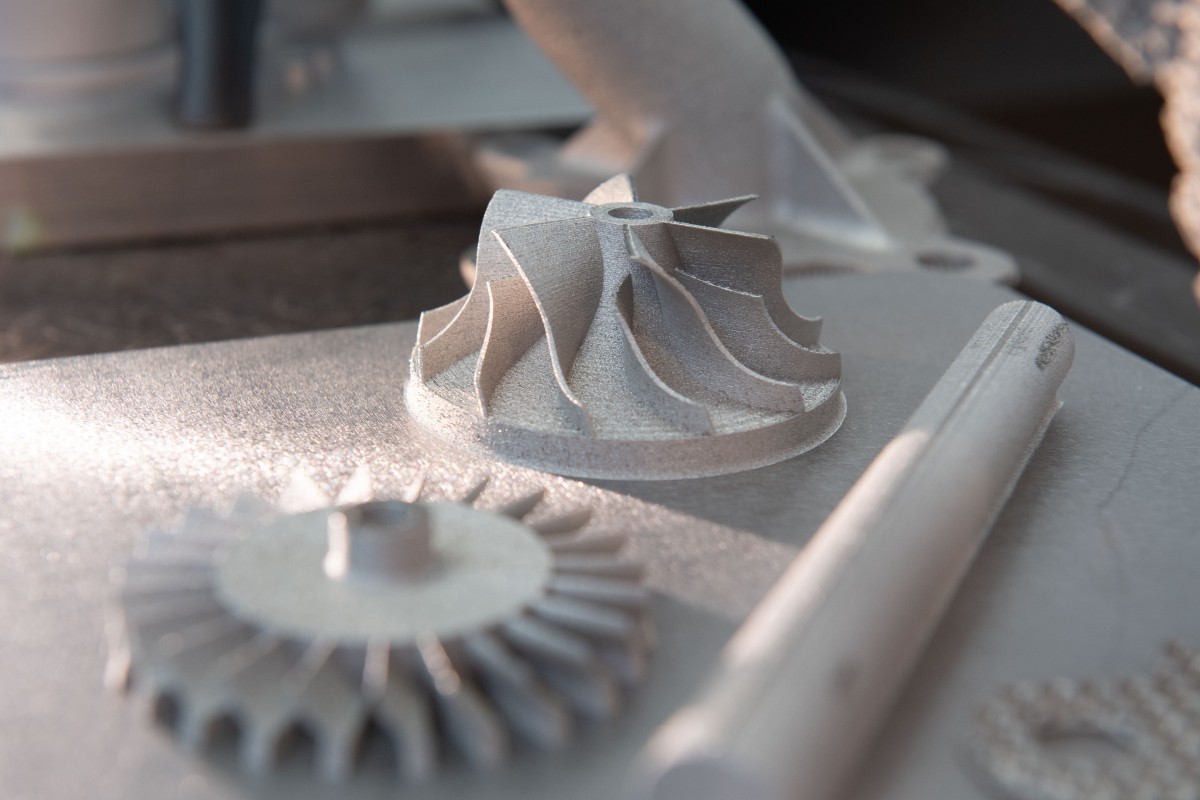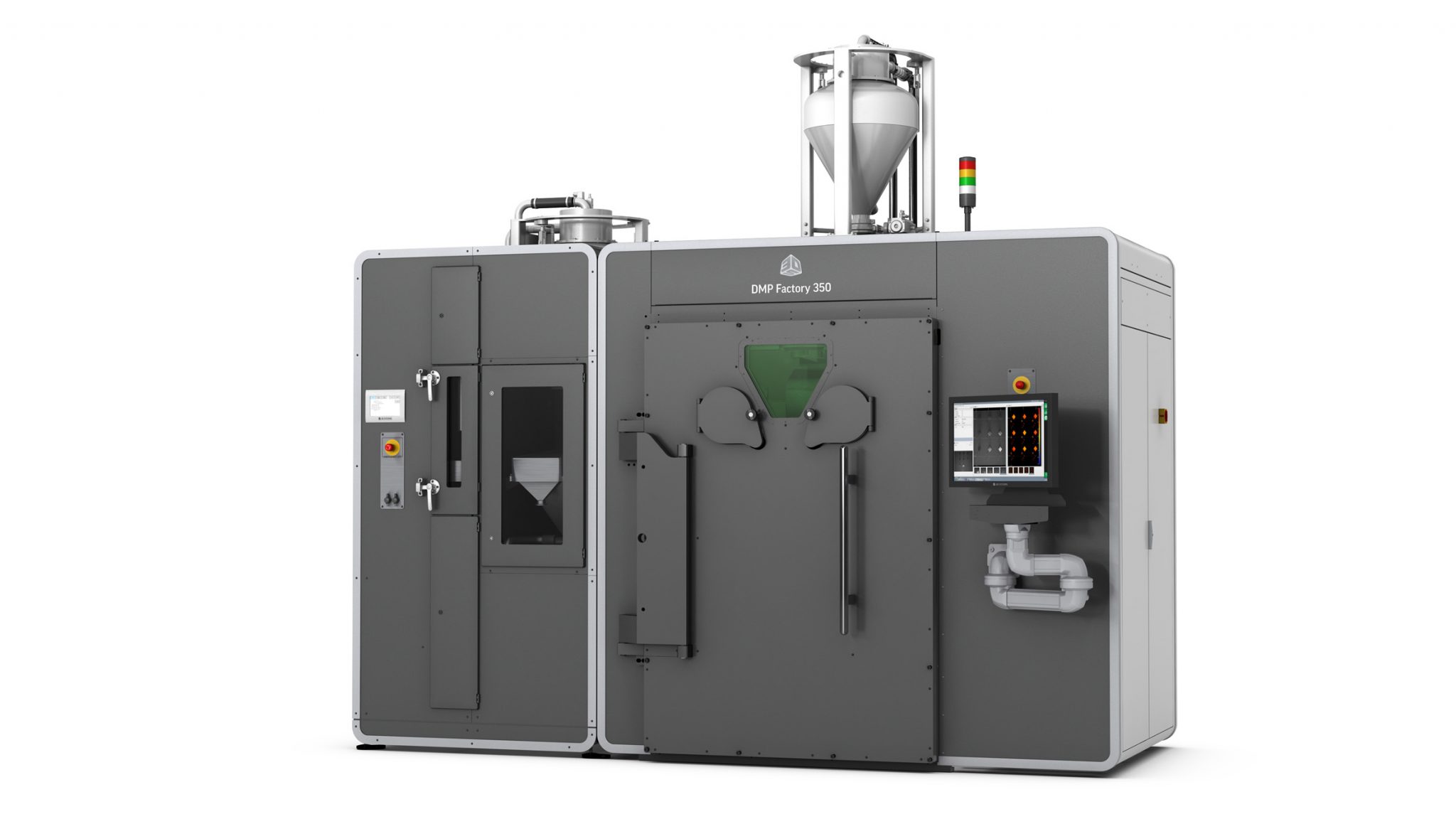Having been awarded a $15M contract to develop the ”world’s largest metal 3D printer” for the U.S. Army Research Laboratory (ARL), 3D printer OEM 3D Systems has now announced a number of new details about the project.
Featuring nine lasers and a large format build chamber measuring 1m x 1m x 600mm, the metal system will be used to address the ammunition, ground vehicle, helicopter, and missile defense needs of the Armed Forces. Alongside the system itself, 3D Systems is also developing complementary materials, software, and services to provide a more comprehensive product. Following Army installation, the machine will then be made available to select aerospace and defense companies, provided they benefit the U.S. Army in some way.
Stephanie Koch, ARL’s Advanced Manufacturing, Materials, and Processes Program Manager, states: “When we embarked on this project, we needed a faster way to produce critical components for major ground combat subsystems. The progress that has been made on this project to date is monumental. We look forward to the coming months as we progress to a full-scale production solution that will enable innovative new capabilities for transformational overmatch.”

Advanced optics for an advanced system
October 2020 saw the completion of the first test print on the new system. The machine features key components based on the ones found in the company’s well-established Direct Metal Printing (DMP) series of 3D printers. This includes the optical train, which gives each of the nine lasers its own melt pool monitoring system, resulting in improved part quality control. Since a near identical optical system is employed, the new machine is also able to make use of the company’s existing extensive qualified materials library.
3D Systems has also integrated six high contrast single-lens reflex (SLR) cameras into the machine’s build chamber, allowing for in-situ monitoring. The cameras provide a top-down view, meaning the user does not need to go through an image manipulation process. Alongside the powder bed images, the system’s firmware captures sensor data, positional data, and melt pool data and collates it all into an SQL database, enabling full part insight.
Chuck Hull, Co-founder and CTO of 3D Systems, adds: “3D Systems was founded on a spirit of innovation, and our customers play a key role in catalyzing this process. Our collaboration with ARL is allowing us to elevate our research and development efforts, achieving many industry firsts on our way to empowering the ARL to meet their goals. Our accomplishments through the first phases of this project will fuel the next, on our way to helping ARL scale their capabilities and bolstering their supply chain.”

Improved material efficiency
Unlike conventional PBF 3D printers, 3D Systems’ machine operates on a selective powder deposition process, meaning it limits powder use by depositing material only where it is needed. The system’s build chamber also features a heated plate, which serves to reduce thermal stresses and improve deposition quality.
Furthermore, the company’s previously developed vacuum chamber concept has been integrated, whereby oxygen levels remain below 25ppm (as opposed to 500 – 1000ppm). As such, the machine consumes about a tenth of the argon comparable metal 3D printers may use, resulting in parts with high chemical purity, a higher proportion of reusable powder, and a lower cost of operation.
This is not the first instance of the Armed Forces having turned to 3D printing technology. Researchers from the US Army Aeromedical Research Laboratory have previously used 3D printing to produce and test customizable earplugs for its soldiers. The army scientists’ novel technique for producing ear protection could be deployed to prevent hearing loss among soldiers on the battlefield.
More recently, the Army extended its digital twin teardown project, which originally involved disassembling a UH-60 Black Hawk helicopter to 3D scan each of its individual components. Announced in October, the project will now be used to fabricate spare parts for aircraft, tanks, and even provide VR training for members of the Armed Forces.
Subscribe to the 3D Printing Industry newsletter for the latest news in additive manufacturing. You can also stay connected by following us on Twitter and liking us on Facebook.
Looking for a career in additive manufacturing? Visit 3D Printing Jobs for a selection of roles in the industry.
Featured image shows metal parts 3D printed by the Army. Photo via Dave McNally/U.S. Army.



